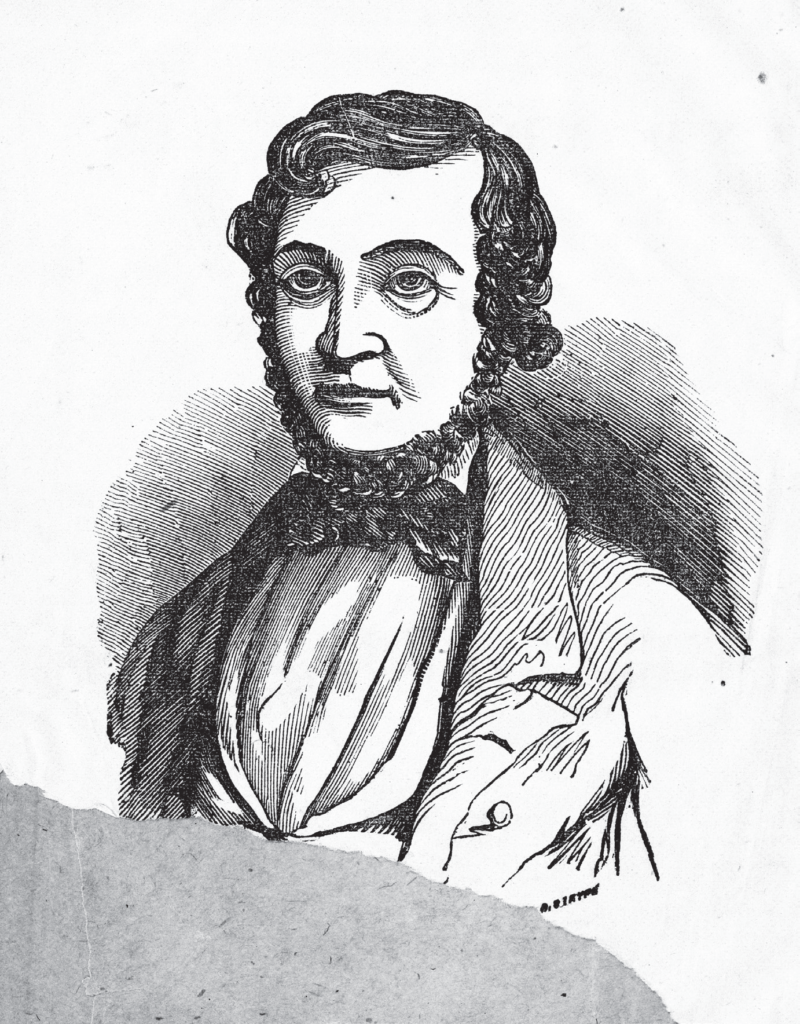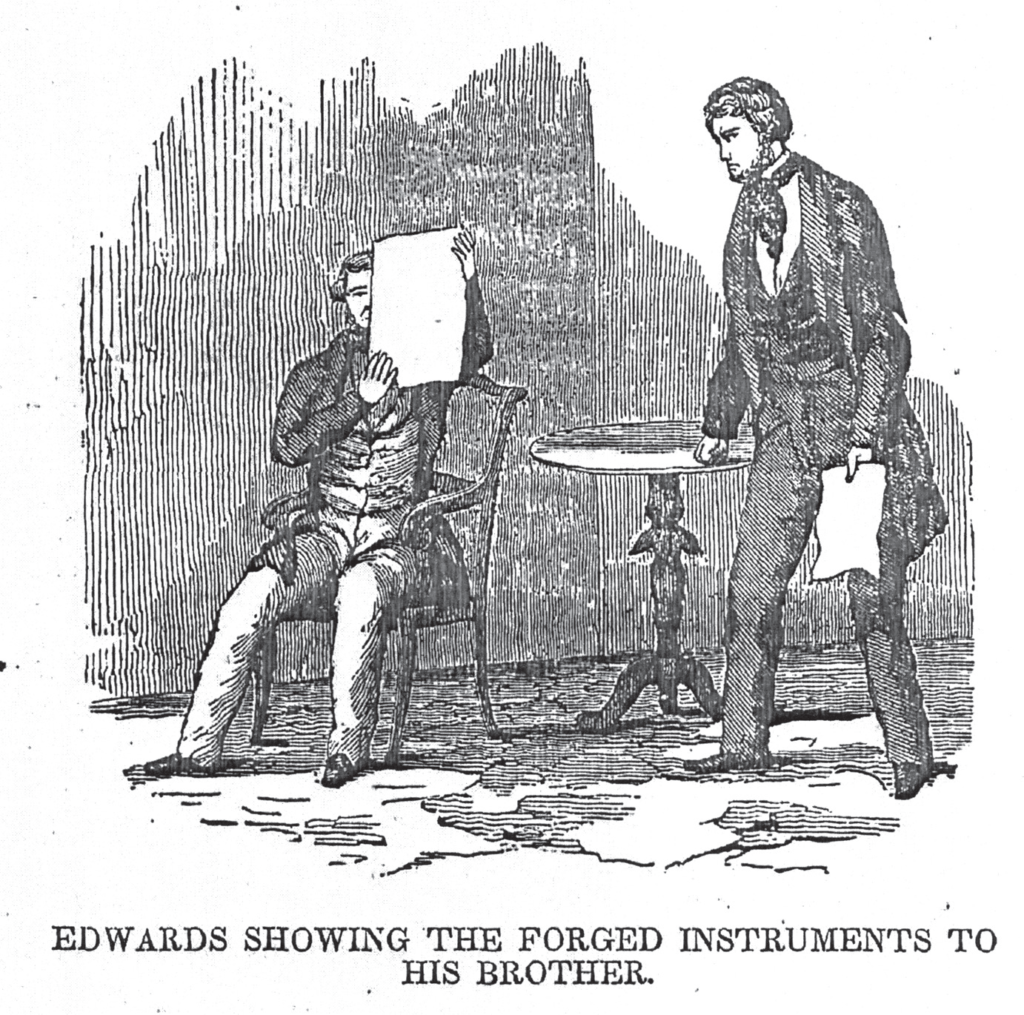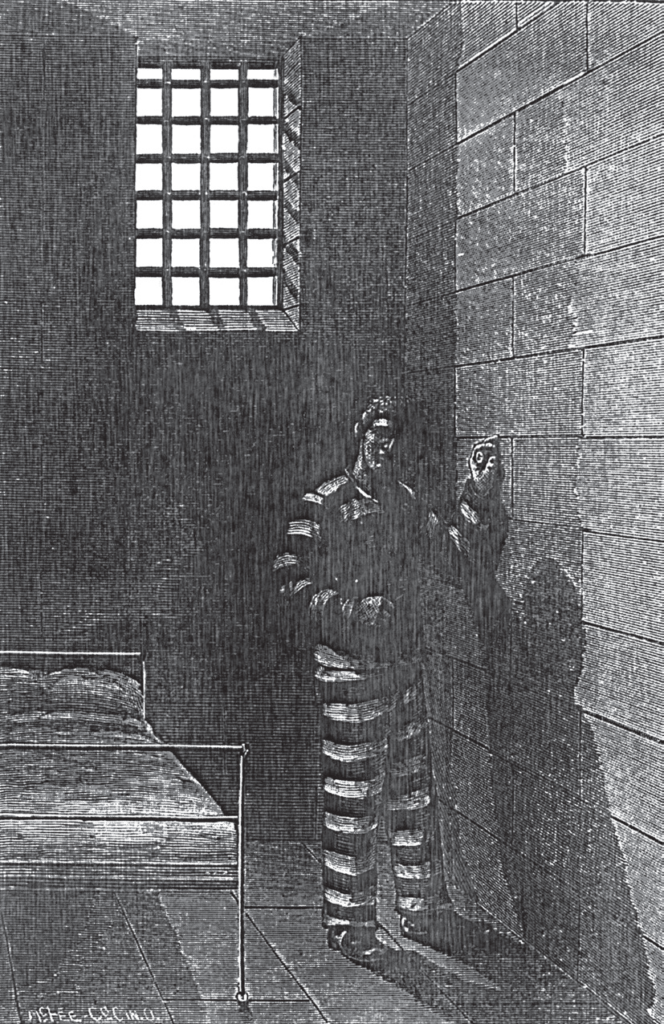
When we talk about identity theft today, almost certainly the conversation turns to technology. Stolen PIN numbers, and credit card skimmers. Hacked passwords and digital bank fraud. All the ways that crooks get access to our electronic lives, plumb them for their gleanings, and disappear without a trace.
But what did identity theft look like in the nineteenth century? Decades before the world had even heard of a bit or a byte?
Thankfully, one of Texas’ most famous criminals gives us a glimpse. Monroe Edwards, a man known far and wide as “the gentleman forger,” lived many lives during his forty years on earth, perhaps most notoriously as a slave trader between Cuba, Mexico, and the Republic of Texas (prior to its joining the United States). But one of his greatest skills was counterfeiting—which would be his ticket both to ill-gotten wealth, and ultimately, to his downfall.

In her book The Counterfeit Prince of Old Texas: Swindling Slaver Monroe Edwards, Bernard charts Edwards’ rambunctious upbringing in the early 1800s, including the wild schemes concocted by his brothers Amos and uncle Haden, and his role in the armed Anahuac uprising against the ruling government of Mexico at the time, for which he was briefly imprisoned. Remarkably, she notes, Edwards was raised for a time by one of old Texas’ great folk heroes, James Morgan, raising the question as to just why that apple fell so far from the tree.
That, however, is a question for a different time. To better understand early identity theft, we should instead take a look at Edwards’ methods. At the time, the key to someone’s identity was their mark: their seal or their signature, affixed to the end of a deed, or a will, or a legal transfer of assets. As a physical artifact, a seal could be stolen, but a signature, a person’s handwriting, couldn’t. Or could it?
The trick, Edwards learned, was not to steal the signature, but to steal the words above it—in other words, to erase them. On one of his visits to Mississippi, he paid a man to teach him how to ‘wash’ letters using the magic combination of benzene (created through heating benzoic acid and lime) and bleach. Bernard:

“Monroe learned how to create the chemical, douse the top part of a letter in it, save the signature and then dry the paper. The result was an empty sheet with the legitimate signature of the original writer. From there, he was taught to write whatever he wanted on the dry paper and pass the letter off as the original writer’s.
Since people knew one another by their signatures and seals, a forger could write what he wished, and the reader would believe it was written by the writer. Only a trained eye would be able to tell if a paper had been washed, and only a chemist would know how to bring the washed writing to the surface. For the most part, the crime was undetectable. By 1838, Monroe had perfected the technique.”

Edwards didn’t learn this for no reason: he was already scheming how to fabricate new terms for a slave run gone south, and to steal plantation property out from underneath his old business partner Christopher Dart. What, then, transpired when he produced those forged documents in court the following year? And how, then, did Dart determine that those letters he had ‘signed’ transferring all of his property over to Edwards were in fact fake? And what, months later, would lead Edwards to flee to Britain to attempt to restore his lost fortunes?
Here’s a hint: it’s the same thing that led to Edwards ending his life a few years later as a guest of the United States federal government in Sing Sing Prison. But for that, dear reader, you’ll have to read Bernard’s book, and learn the full story yourself. It’s a remarkable tale, and thanks to her extensive research, we can promise one thing for sure—on those carefully crafted pages, not a single drop of ink will run.





